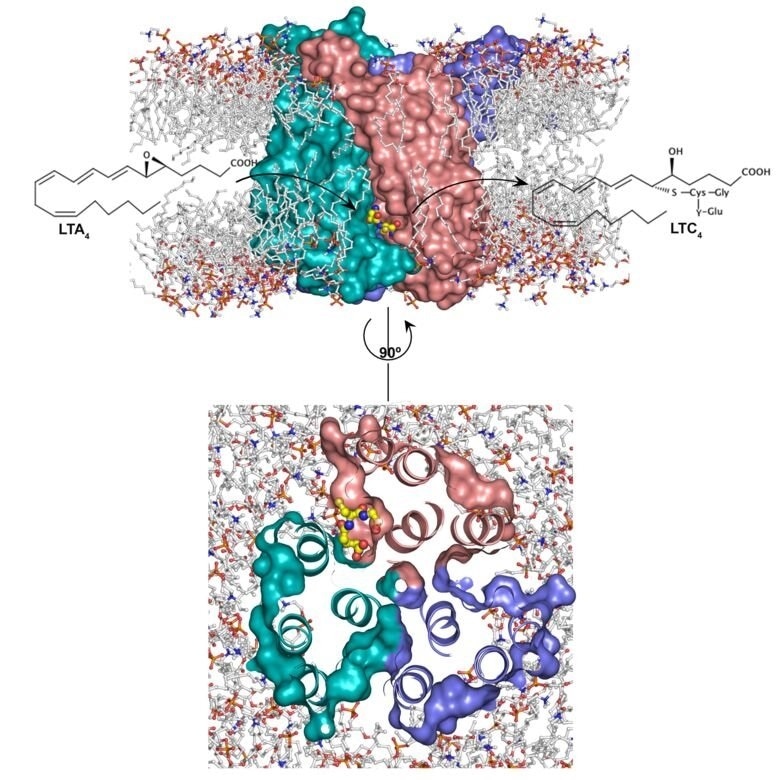A majority of the drugs work through the membranes surrounding the cells of the body. Scientists from Karolinska Institutet have now mapped the mechanism and structure of MGST2, a membrane enzyme that, besides other functions, has a role in chronic inflammation and cancer.

The enzyme MGST2 embedded in nuclear membranes. Image Credit: Madhuranayaki Thulasingam.
Published in the Nature Communications journal, the new study can offer a major contribution to the development of future drugs.
A fat-rich membrane encloses all the cells in the human body. The organelles, which are the cells’ equivalent to organs, are also enclosed by membranes. Proteins that control a huge number of vital functions are embedded in the internal and external membranes of cells. Nearly half of all drugs are effective through membrane proteins, like receptors, enzymes, and transporters.
Three active units
By using biochemical techniques, X-ray crystallography, and molecular dynamics simulations, scientists from Karolinska Institutet have now identified the 3D structure and mechanism of a crucial enzyme embedded in the nuclear membrane of cells.
The Microsomal Glutathione S-transferase 2 (MGST2) membrane enzyme is the motor of a biochemical process that leads to oxidative stress and the development of oxygen radicals and, in turn, DNA damage and cell death.
Membrane proteins are hard to study and it’s fantastic that we’ve managed to determine the crystal structure for MGST2 at high resolution. One of the study’s findings is that MGST2 is made up of three functional units that are controlled in an unusually sophisticated manner. The three units are involved in mutually coordinated movements, taking turns to perform the enzyme’s function one active unit at a time.”
Madhuranayaki Thulasingam, Study First Author and Researcher, Department of Medical Biochemistry and Biophysics, Karolinska Institutet
MGST2 is part of a larger class of enzymes that regulate the formation of prostaglandins and leukotrienes—signal molecules that control pain, fever, and inflammation of the joints, heart and blood vessels, and airways.
Significant group for drug development
The study results offer valuable information related to the molecular regulation of other members of the enzyme class, several of which are crucial targets for future drug development.
We hope that our results will be able to contribute to the development of drugs for many diseases characterised by increased synthesis of oxygen radicals and cell death, such as chronic inflammation, cancer and side-effects of radio- and chemotherapy.”
Jesper Z. Haeggström, Study Principal Investigator and Professor, Department of Medical Biochemistry and Biophysics, Karolinska Institutet
Source:
Journal reference:
Thulasingam, M., et al. (2020) Crystal structures of human MGST2 reveal synchronized conformational changes regulating catalysis. Nature Communications. doi.org/10.1038/s41467-021-21924-8.